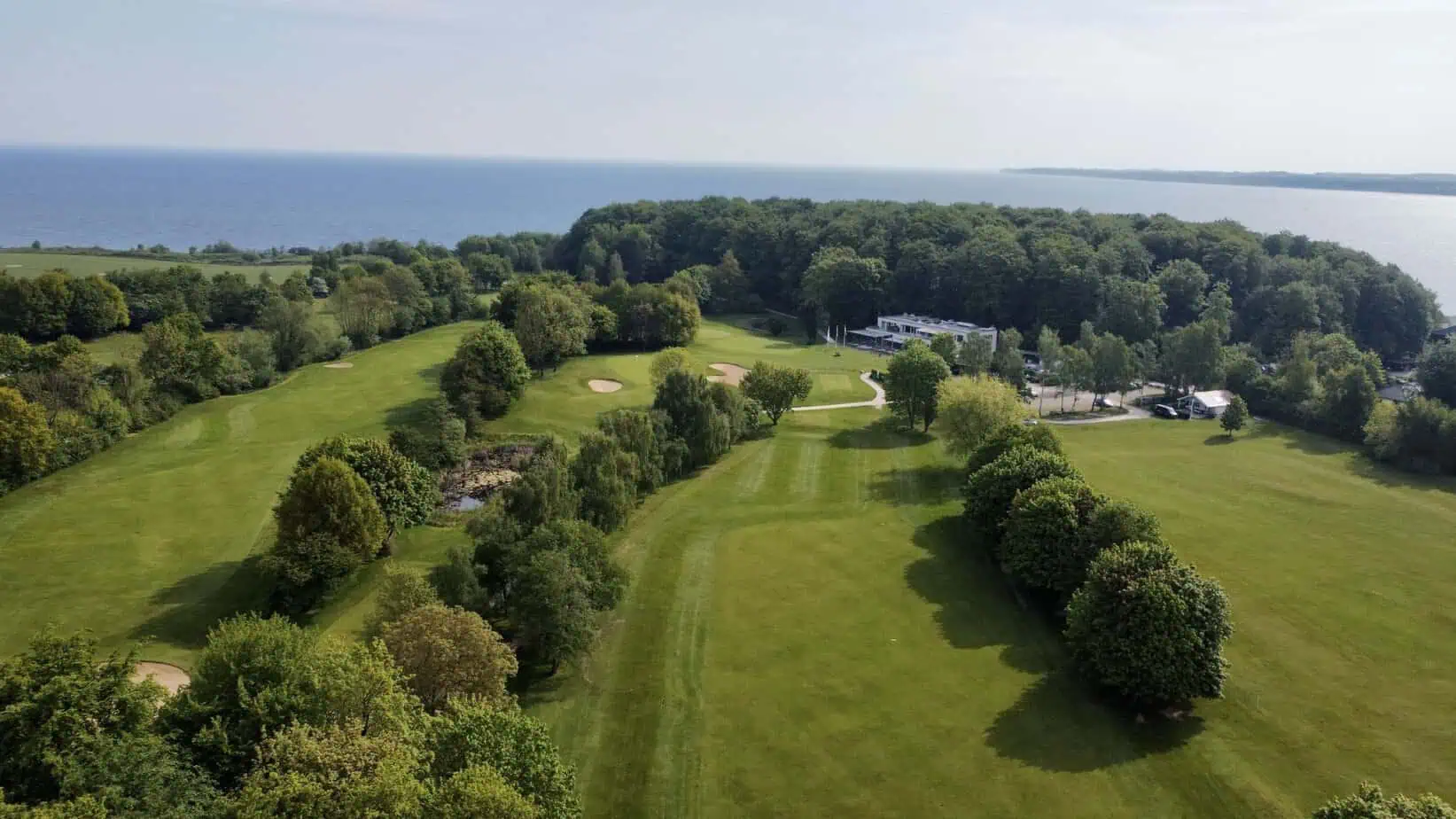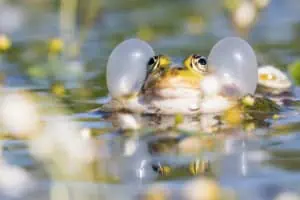LTGK focuses on sustainable management
It’s the green frog that gets conservationists excited. “The frog is doing well here. And has been for years,” explains head greenkeeper Adam Nargorski with a satisfied look at a small pond not far from the clubhouse of the Lübeck-Travemünde Golf Klub in the northern part of Germany. Pelophylax esculentus, the frog’s correct name, is on Schleswig-Holstein’s red list of endangered species – but here on the golf course, it is developing magnificently.
Bats and 61 bird species
The local environmental authorities were delighted with the findings during a fauna and flora monitoring exercise necessary during negotiations for a lease extension for the traditional facility. It soon became clear that the green frog was not the only unusual find. Two species of coloured bats, pond bats, Bechstein’s bats and greater whiskered bats are also at home on the 27-hole course. In addition, 61 bird species have been recorded. This is a typical sign that golf courses in the Schleswig-Holstein Golf Association are a plus for biodiversity in the region.
Nevertheless, the board and greenkeeping team of the traditional club, which has existed on the 130-hectare site since 1921, have recognized that traditional maintenance management is no longer fit for the future. The requirements for sustainable greenkeeping have grown throughout Europe. The aim is to harmonize recreational and natural areas so that golf and nature conservation benefit and fewer resources, such as water, are consumed.
A learning process, no doubt about it, says press spokesman Simon Selby, who believes that the club management has since made numerous changes to the course towards more sustainable management of the facility. “Now it’s about getting our golfers into action” he says about the membership. In principle, of course, they are behind environmentally friendly management of the golf course, but they have to be convinced of individual projects.
Maintained area reduced by eight hectares
The extension of the semi-rough, in particular, is a change that often catches the eye of players. “We have moved it inwards by at least one mower width,” summarizes Nargorski. However, due to the already very comfortable fairway width of many holes, this change was possible without any problems. Eight hectares of playing area could thus be taken out of maintenance and will contribute to greater biodiversity on the golf course in future.
A positive side effect is that the reduction in the area worked also reduces the consumption of resources, which the Lübeck-Travemünde Golf Klub has already set itself as a goal. The reduction in mowing areas reduces the fuel consumption of diesel-powered mowers. However, as the golf course is being converted to electric robot mowers anyway, electricity consumption will also be reduced. The golf club also obtains this from its own production: since 2023, there has been a photovoltaic system on the roof of the building yard with an output of 77 kWp. “This covers our own consumption completely,” Selby sums up happily. For example, the 20 electric carts that the club has in operation and the ten robotic mowers that are currently on the course are powered by this system.
A change in water management also plays a part in saving energy: a new irrigation system has reduced the previous consumption of 80,000 m³ of groundwater to 35,000 m³ for 27 courses. “The accuracy of the sprinklers, for example, has increased,” says Nargorski with satisfaction, although in 2024, like all other clubs in northern Germany, the main problem was wet conditions rather than drought. But this is another area where the club scores points: anyone who steps onto the fairways on a wet fall day will notice a surprising firmness. The costly sanding of fairways is one of those greenkeeping measures that are not obvious to the member, but which have a significant positive impact on the playability of the course.
The transformation phase of the Lübeck-Travemünde Golf Klub is not yet complete. Looking at the greens on the third nine-hole loop, which are up to one hundred years old and reach close to the coastal walkway, it is clear that there is still work to be done here too. “In terms of drainage, the old greens can no longer withstand the heavy rain,” summarizes Nargorski. He hopes for improvement, especially as heavily overgrown greens with extremely tall trees also increase susceptibility to green diseases.
Here, too, the redesign of courses is once again a matter of weighing up the pros and cons: preserving trees for the sake of nature or felling trees for the sake of green health? It will not be an easy process. But the Lübeck-Travemünde Golf Klub has learned one thing in recent years: sustainable club management is not a quick fix, but a long-term process in which many factors are considered. This is the only way to secure the future of the golf course.









